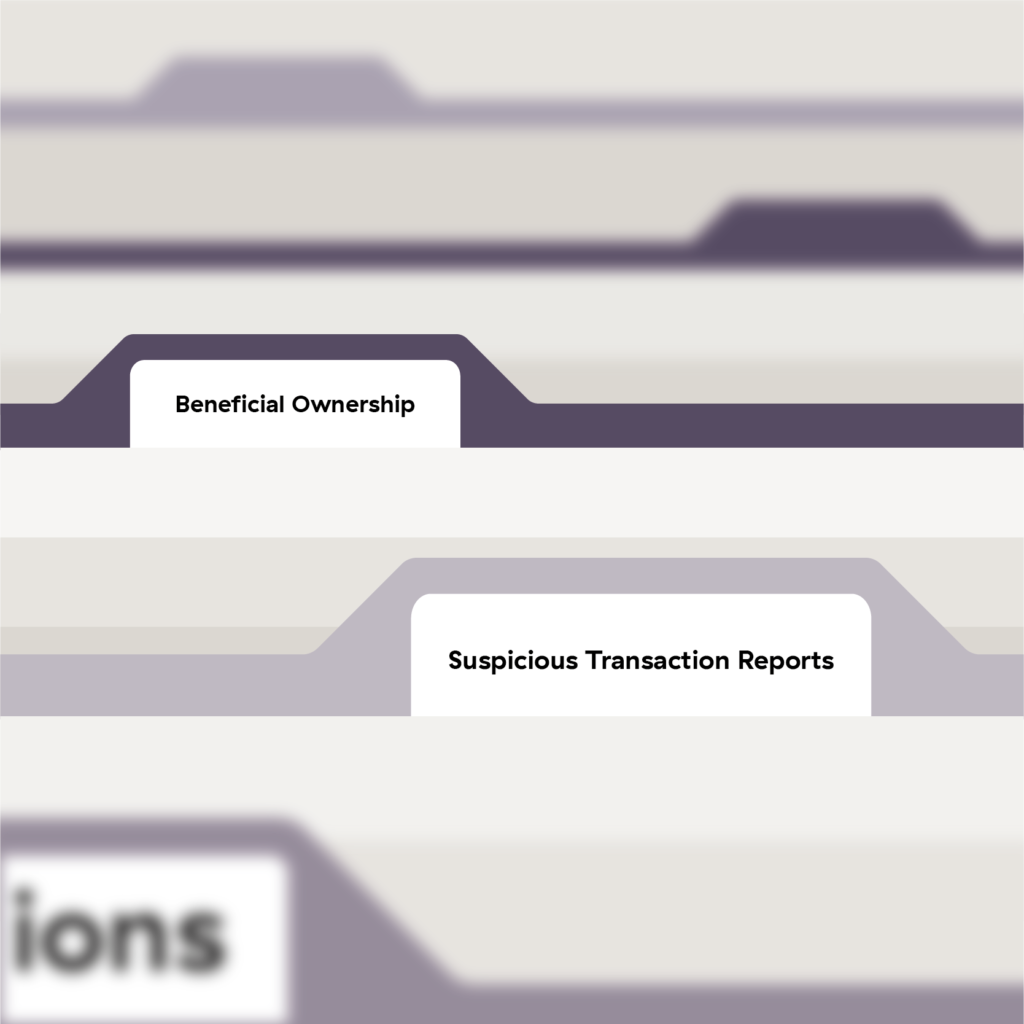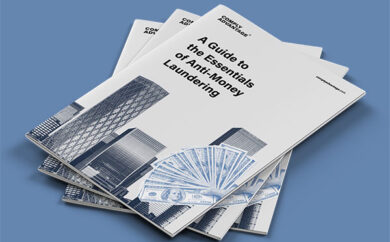

Canada has a history of underperformance with respect to following Anti-Money Laundering (AML) and Anti-Terrorist Financing (ATF) best practices, but the country has consistently improved to close the gap. Based on the findings of FATF’s most recent mutual evaluation, it has enacted changes to its main AML/ATF legislation to address some, but not all, deficiencies.
The Financial Action Task Force (FATF), the intergovernmental standards-setting body for combating financial money laundering and terrorist financing, has established 40 Recommendations that represent best practices for member countries to follow with respect to anti-money laundering, which are supplemented by Nine Recommendations with respect to anti-terrorist financing. These are known collectively as the 40+9 Recommendations. FATF conducts periodic (every 5-10 years) mutual evaluations, in which a country’s AML/ATF framework is judged by staff from other member states with respect to 1) whether and to what degree the country has implemented the 40+9 Recommendations, and 2) whether the laws and processes implementing those measures are actually effective.
Canada’s mutual evaluation in 2008 found substantial gaps in its implementation of the Recommendations, and as a result, it was subject to annual follow-up reviews. These reviews continued until a mutual evaluation was conducted in 2016. Although this mutual evaluation found that Canada had made sufficient progress and was no longer required to undergo annual reviews, the review nonetheless found several deficiencies that required attention. As a result, the Canadian parliament and regulatory authorities have implemented a number of amendments to the Proceeds of Crime (Money Laundering) and Terrorist Financing Act (PCMLTFA) and its Regulations. These amendments were made final in July 2019, with some changes going into effect immediately, some coming into effect in June 2020, and the majority coming into effect in June 2021. 
New Legislation and Regulatory Requirements
In the aftermath of the 2016 FATF report, a wide range of amendments to the PCMLTFA and regulations were proposed and submitted for consultation, and the revised proposals were approved in July 2019. The new requirements will be implemented in three phases, with some measures effective immediately upon passage (and thus already in effect), and others coming into effect in June 2020 and June 2021.
New Requirements for Reporting Entities
A number of changes were made to the requirements placed on reporting entities (REs). Those taking immediate effect deal with the verification of identification documents (making it easier for REs to comply). Provisions that require virtual currency dealers to register as money services businesses take effect June 1, 2020, and most other provisions take effect June 1, 2021.
Electronic Fund Transfers
Changes to reports required for electronic fund transfers (EFTs) are likely to be among those with the greatest practical impact on regulated financial institutions and money transmitters. Because the changes impose new requirements on intermediaries to these transfers as well as sending and receiving institutions, the changes may also impact certain non-financial REs.
A revised interpretation of the “travel rule” will impose additional requirements with respect to reporting of international EFTs. Prior to the amendments, the “travel rule” has required financial institutions to include the name, account number and address of the client requesting the transfer in reports regarding international EFTs, and to “take reasonable measures” to ensure that incoming international EFTs include that information. The amended rule will now extend those requirements to the beneficiary of the international transfer, which may be different from the recipient.
To judge the impact of these changes, it should be noted that more than ten times as many EFT reports are filed in Canada than STRs — 12 million EFT reports versus 92,000 STRs in 2014-2015, the most recent period available.
Report Filing Deadlines
The reporting timeline for making a suspicious transaction report (STR) has been substantially reduced, from “within 30 days” of determining the activity to be suspicious to “as soon as practicable.” This new timeline implies that reports must be filed promptly after the RE has determined that there are reasonable grounds to be suspicious of the transaction. Moreover, additional information will now be required in the STR. Another report, the terrorist property report, will now be required to be filed “immediately.”
In practical terms, the changes to STR reporting mainly take the form of changing the process and procedures, rather than creating entirely new requirements.
Politically Exposed Persons
Politically exposed persons (PEPs) are politicians, civil servants and other government personnel. They are, by their nature, considered high risk due to the potential for bribery and corruption. There are four types of PEPs in Canadian law:
- domestic (e.g., a Canadian politician);
- foreign;
- head of an international organization, such as the World Bank (HIO); and
- a family member or close associate of an individual falling into one of the other three categories.
Prior to the 2019 amendments, REs were required to determine whether a person was a PEP at account opening and any time a person sent or received an electronic funds transfer of C$100,000 or more.
The amendments extend the PEP review trigger to include persons who send or receive C$100,000 or more via EFT or virtual currency, or who make a payment of C$100,000 or more to a prepaid product, such as a prepaid card.
Additionally, the amendments require REs to determine a PEP’s “source of wealth,” whereas they were previously only required to determine the source of funds deposited into the account.
Beneficial Ownership
Changes to beneficial ownership requirements now require REs to regularly update this information and, when receiving new information, confirm its accuracy. Canada does not maintain a corporate register of ownership.
Other
Changes to client identification and corporate verification procedures generally serve to make the process easier for REs, allowing the use of a wider range of sources and documentation.
Extension of PCMLTFA to New Entities
The amendments modernize and expand the interpretation of certain businesses with the result that the PCMLTFA/PCMLTFR requirements will apply to those businesses.
Extension of the Definition of Money Services Business
The money services business (MSB) sector has been regulated under PCMLTFA for several years, but the amendments extend the scope of the sector to include new businesses. MSBs are businesses that engage with the public in foreign exchange dealing, money transfers or cashing/selling money orders and other cash equivalents.
Under the amendments, the definition of MSB is extended to entities dealing in virtual currencies, with limited exceptions, for example those dealing solely in virtual currencies that are not convertible to traditional currencies (“closed-loop” virtual currencies). As a result, virtual currency dealers that engage in the specified activities will be required to meet the full range of requirements under the PCMLTFA and Regulations, including registration, record-keeping, suspicious transaction reporting and establishment of a compliance program.
Additionally, foreign MSBs will now fall under the PCMLTFA and Regulations. The impact of this change is that MSBs that do not have a physical presence in Canada but which can service Canadian customers via internet or fintech transactions will now be required to meet the same provisions as domestic MSBs, with slightly lighter record-keeping requirements.
Newly covered MSBs, both foreign MSBs and virtual currency dealers, will now be obliged to meet the full range of screening, record-keeping, monitoring and reporting requirements, including the identification of beneficiaries under the revised “travel rule” noted above.
MSBs account for nearly half of all STRs, which is double the number filed by banks. As such, the extension of this sector to include new entities will create new demand in entities that are likely to have substantial regulated activity.
Life Insurance
Life insurance businesses that conduct certain types of activities will have new PCMLTFA obligations to meet. Specifically, companies that provide loans against the cash surrender value of policies will be treated the same as banks offering loans, triggering customer due diligence, PEP screening, activity monitoring and record-keeping requirements. Discussion around the 2019 amendments also indicates that life insurance companies issue prepaid products, and doing so will trigger the PCMLTFA requirements.
Regulations Enacted But Not Yet Implemented
Most of the PCMLTFA amendments will not go into effect until mid-2020 or mid-2021. Additionally, some sectors identified by FATF and others as high risk remain outside of PCMLTFA requirements but can expect increasing attention from Canadian authorities.
The bulk of the amendments to the PCMLTFA and Regulations remain to be implemented. The provisions that came into effect upon the final approval of the amendments were those that expanded the range of acceptable customer identification documents.
In June 2020, the amendments impacting suspicious transaction reports (STRs) and other reports will go into effect, along with the regulations bringing virtual currency dealers and foreign MSBs under regulation. The remainder of the amendments will come into effect in June 2021. There are a number of sectors and products identified as high risk but that remain unaddressed. These include alternative mortgage providers, mortgage insurers and providers of white-label automated teller machines. Regulations addressing these areas are likely to be implemented in a piecemeal fashion over the coming two years.
There are a number of sectors and products identified as high risk but that remain unaddressed. These include alternative mortgage providers, mortgage insurers and providers of white-label automated teller machines. Regulations addressing these areas are likely to be implemented in a piecemeal fashion over the coming two years.
Assessments by FATF, the IMF and the Canadian authorities identified several areas of concern that remain unaddressed by regulation or law. The three main concerns are the lack of a beneficial ownership registry, the inapplicability of most AML/ATF laws to attorneys and law firms and the growth of new technologies.
Beneficial Ownership
In October 2019, FATF published best practices for member states regarding beneficial ownership, which FATF had found to be a common issue among members and not just Canada. The best practice guide lays out three strategies for ensuring that beneficial ownership information is adequate, accurate and timely and recommends that member states include a combination of two, or all three, methods. Those are:
- The Registry Approach, in which national regulators establish a common registry of legal and beneficial ownership information;
- The Company Approach, in which the companies themselves are legally obligated to maintain up-to-date information on legal and beneficial ownership, which is then available to regulators and law enforcement (and, ideally regulated entities); and
- The Existing Information approach, in which there are no specific information obligations, but existing information is obtained from a range of sources.
This upshot of this guidance is that, for the foreseeable future, Canada, by default, must rely on the Existing Information approach, at least until such time as proposed measures to create a national registry are implemented (which will likely take years to populate even once it is established). As is the case with other data, financial institutions may have raw data that could paint a picture of company ownership if put together and analyzed using AI, and this could be an attractive solution for a high-profile challenge facing its customers and potential customers. Moreover, this type of analysis could show associations between ostensibly unrelated parties, which may imply common ownership and, at any rate, is a key element of intelligence in identifying many of the typologies used in money laundering and terrorist financing. For example, common addresses or common authorized individuals are an indication of potential common ownership. Transactional data can be analyzed, such as transactions with the same third party, or individuals whose transactions imply that they are in the same location at roughly the same time.
In summary, continuously developing information that helps piece together beneficial ownership could engage clients and prospects both with respect to addressing the ownership challenges and with respect to more effective identification of complex typologies.
Attorneys and Law Firms
A Canadian Supreme Court decision in 2015 found that AML/ATF reporting requirements could violate attorney/client privilege, effectively excluding lawyers and law firms from needing to abide by these requirements with respect to their clients. To date, no legislation has been passed that would work around this obstacle.
New Technologies and Currencies
FINTRAC has identified the use of evolving technologies as remaking the financial landscape. In its 2019-2020 Departmental Report, FINTRAC stated:
“Technology brings new and evolving challenges such as anonymity, speed and volume of transactions, and changes in the nature of transactions from cash to new payment platforms and digital currencies. The world’s financial systems are rapidly evolving. With the advent of artificial intelligence, machine learning, big data, predictive analytics, and distributed systems, the financial services industry is seeing an unprecedented level of digital disruption, such as the growing use of fintech, blockchain and cryptocurrencies.”
These same technologies create additional avenues for money launderers and terrorist financiers. FINTRAC also recognizes, though, that artificial intelligence and other evolving technologies can also provide the tools with which to combat this activity. Importantly, part of its approach is to partner with private sector firms that can help FINTRAC to do so. The organization’s objectives, which are detailed in its strategic plan for 2019-2024, include a commitment to “investigate and promote opportunities for private sector engagements and partnerships,” which may involve private sector technology partners.
Parting Thoughts
What form any public-private partnerships take — whether dealing with new technologies or with other aspects of the fight against financial crime — remains to be seen. Nevertheless, they serve to underscore the fact that a multi-pronged, collaborative approach is critical to improving the effectiveness of Canada’s AML/ATF regime. These improvements can’t come fast enough either.
Over the last two years, a slew of revelations has trained a spotlight on Canada’s lax anti-money laundering controls. From the collapse of its biggest money laundering investigation in history in late-2018 to the discovery that money laundering charges have only a 9% conviction rate, the news out of Canada looks pretty bleak. Add to that the estimate that 99.9% of money laundering is overlooked, and it’s no wonder Canada’s citizens are beginning to raise alarm bells and demand accountability.
The growing public awareness and the increased scrutiny Canada is under may very well be the push Canada needs to rehabilitate its image. While it’s clear the country has its work cut out for it, these new regulations are a promising first step towards strengthening its AML/ATF regime.
How can you stay compliant with AML/ATF in Canada?
Disclaimer: This is for general information only. The information presented does not constitute legal advice. ComplyAdvantage accepts no responsibility for any information contained herein and disclaims and excludes any liability in respect of the contents or for action taken based on this information.
Copyright © 2025 IVXS UK Limited (trading as ComplyAdvantage).
